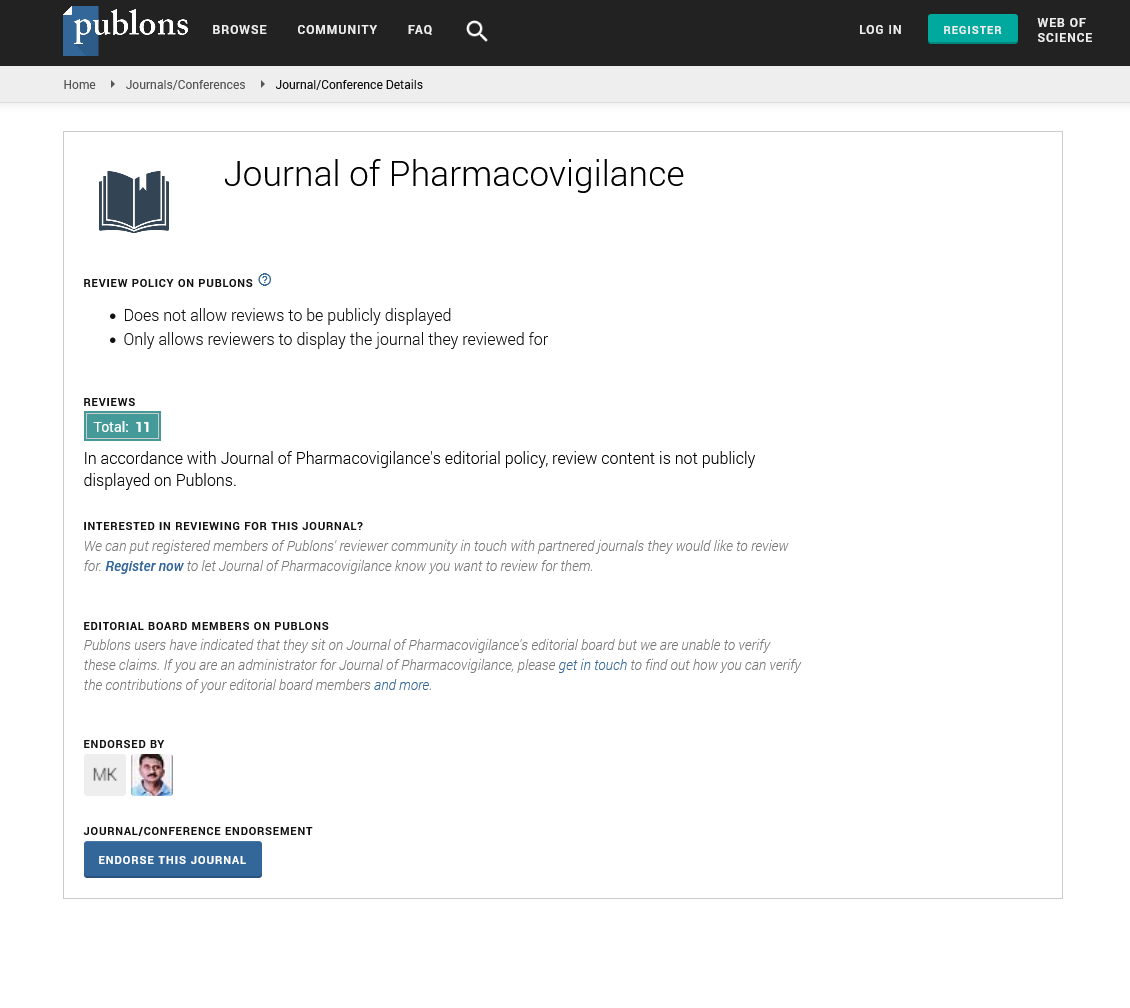Indexed In
- Open J Gate
- JournalTOCs
- The Global Impact Factor (GIF)
- RefSeek
- Hamdard University
- EBSCO A-Z
- OCLC- WorldCat
- Publons
- Euro Pub
- Google Scholar
Useful Links
Share This Page
Journal Flyer

Open Access Journals
- Agri and Aquaculture
- Biochemistry
- Bioinformatics & Systems Biology
- Business & Management
- Chemistry
- Clinical Sciences
- Engineering
- Food & Nutrition
- General Science
- Genetics & Molecular Biology
- Immunology & Microbiology
- Medical Sciences
- Neuroscience & Psychology
- Nursing & Health Care
- Pharmaceutical Sciences
Short Communication - (2020) Volume 8, Issue 3
Vitamin D Deficiency and COVID-19: A review on the combined challenges of the older adults in low resource settings
Taoreed Azeez*Received: 15-Jun-2020 Published: 08-Jul-2020, DOI: 10.35248/2329-6887.20.8.281
Coronavirus disease 2019 (COVID-19) is a viral infection caused by severe acute respiratory syndrome coronavirus-2 (SARS CoV-2) [1]. It was first reported in Wuhan city, China but it has now been declared as a pandemic by the World Health Organization (WHO). The virus is transmitted mainly by respiratory droplets. The common clinical presentations are fever, dry cough, generalized body aches, sore throat and abdominal symptoms and the treatment is mainly supportive. It affects both high resource and low resource nations. Managing COVID-19 has put a tremendous strain on health care infrastructure and this is even more pronounced in low resource settings.
Risk of contracting and dying from COVID-19 is higher among old people [2]. This is thought to be related to the physiological changes associated with aging, such as immunosuppression. Also, co-morbidities such as diabetes, hypertension and cardiovascular diseases are associated with increased morbidity among COVID-19 patients and these co-morbidities are commoner among old people. These predisposing co-morbidities like hypertension and diabetes are often poorly controlled in low resource settings, due to different reasons, with attendant increased mortality. Evidence from various studies indicate a risk of mortality from COVID-19 of 3.6% for people in their 60s, which increases to 8.0% and 14.8% for people in their 70s and over 80s respectively [3].
The challenges being faced by older persons in the COVID-19 era in low resource settings are enormous. Firstly, specially designed geriatric care is almost inexistent in the poor resource settings as a result of poor health infrastructure and unfavorable geriatric health policies. Out of pocket payment for care is the commonest modality of accessing care in low resource setting and widespread lockdown approach of various national governments have limited their earning capacity of older persons. Elderly people are often socially deprived. Therefore, isolation and social distancing, which constitute the main approaches to combat COVID-19, would worsen their social deprivation. Adequate nutrition, timely supply of drugs and dug adherence become significant challenges to older persons in COVID-19 era, especially in low resource settings.
Vitamin D is a fat-soluble vitamin, chemically classified as steroid and it has hormone-like activity.4 Vitamin D deficiency is also considered as a pandemic. Vitamin D deficiency is associated with immune dysfunction and this accentuates the immune depression of ageing. Vitamin D deficiency is commoner and more severe among the elderly partly due to reduced exposure to sunlight, as they are mostly indoors. Also, it has been reported that vitamin D synthesis in the skin becomes less efficient with age [4]. A study involving 216 adults found a 74% prevalence of vitamin D deficiency among old people [5]. The challenges of vitamin D deficiency is even more prominent in low resource settings due to reduced availability of vitamin D-supplemented diets.
It has been highlighted how COVID-19 and vitamin D deficiency independently constitute challenges to the elderly, especially in low-resource settings. The challenges are however expanded when the relationships between COVID-19 and vitamin D deficiency are explored. It has been extensively documented that vitamin D deficiency predisposes to COVID-19 and cardiovascular disease [6]. The immunomodulatory role of vitamin D has been linked to this.4 Moreover, COVID-19 can also predispose to vitamin D deficiency as a result of lack of sunlight exposure due to lockdowns and isolation. Also, availability of vitamin d-supplemented diets is significantly reduced, in low resource settings where food supply chain was already weak, even before COVID-19 emerged.
Conclusion
The older adults in low resource settings face the challenges of scarcely available specialized geriatric care at the background. Also, they face the challenges of vitamin D deficiency especially I low resource settings where vitamin D supplementation is often unprescribed. On top of these came the challenges of COVID-19 which has increased incidence and severity among the elderly. The interrelationships of COVID-19 and vitamin D deficiency have also been highlighted which combine to compound the challenges of the elderly population in low resource settings.
REFERENCES
- Kannan S, Ali PSS, Sheeza A, Hemalatha K. COVID-19 (Novel Coronavirus 2019) - recent trends. Eur Rev Med Pharmacol Sci. 2020; 24(4):2006-2011.
- Zhou F, Yu T, Du R, Fan G, Liu Y, Xiang J et al. Clinical course and risk factors for mortality of adult inpatients with COVID-19 in Wuhan, China: a retrospective cohort study. Lancet. 2020; 395 (10229): 1054-1062.
- Brooke J, Jackson D. Older people and COVID‐19: Isolation, risk and ageism. J Clin Nurs. 2020; 29 (14): 2044-2046.
- Naeem Z. Vitamin D Deficiency- An Ignored Epidemic. Int J Health Sci. 2010; 4(1): 5-6.
- Bani-issa W, Eldeirawi K, Harfil S, Fakhry R. Vitamin D deficiency and its determinants in adults: a sample from community-based settings in the United Arab Emirates. International journal of endocrinology. 2017 Jan 1;2017.
- Van der Meulen J. COVID-19 and vitamin D deficiency, a fatal combination? Neth J Med. 2020; 78(4): 218.
Citation: Taoreed Azeez (2020) Vitamin D deficiency and COVID-19: A review on the combined challenges of the older adults in low resource settings. J Pharamacovigil. 8:281. doi-10.35248/2329-6887.20.8.281.
Copyright: © 2020 Taoreed Azeez. This is an open-access article distributed under the terms of the Creative Commons Attribution License, which permits unrestricted use, distribution, and reproduction in any medium, provided the original author and source are credited.

